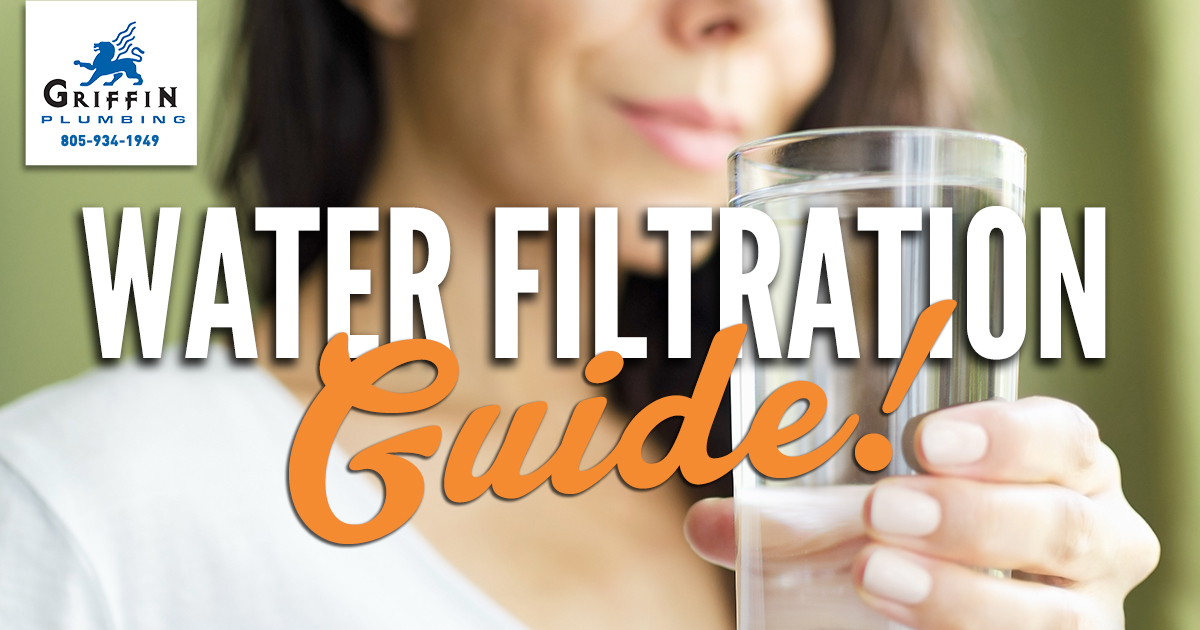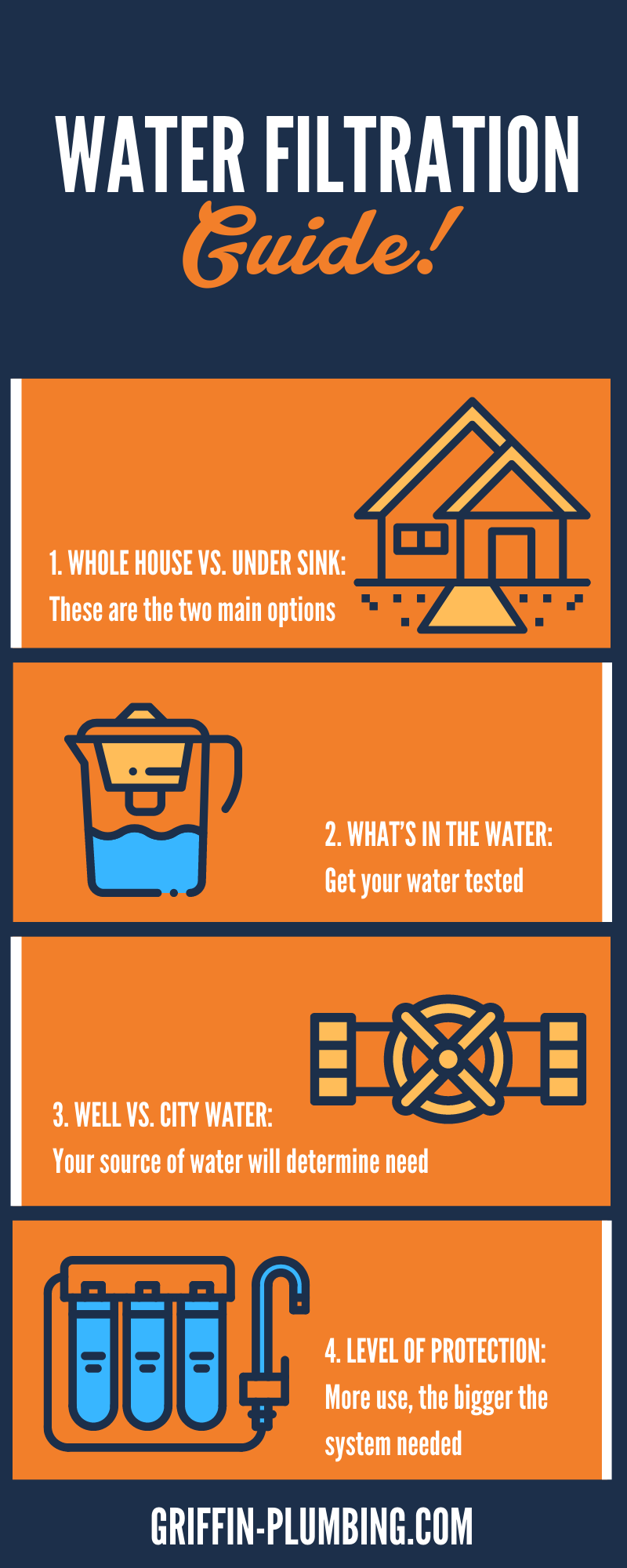It’s not very comforting when you realize that these days the water coming out of your home’s faucets may not be all that healthy for you. A majority of tap and well water across this country contains moderate to heavy levels of contamination. But how to choose water filtration for your home? There are a lot of options out there, so our friendly San Luis Obispo plumbers have come up with a guide to help.
Whole House vs. Under-sink Drinking Water Filter
There are basically two different types of water filter systems installed in homes: a “point of use” (POU) system, like a reverse osmosis system installed under your kitchen sink; or a “point of entry” (POE) system that treats water as it enters the home, such as a softener system.
It boils down to determining whether you need to treat just the drinking water at your kitchen tap or if you’d like to treat all the water coming into the home. Often, the best solution is a combination of both whole house water filtration (water softener to treat the water coming into the house), and a reverse osmosis filter system under the kitchen sink for drinking and cooking water.
Here are some factors to consider when deciding what system – or systems – are best for you and your family.
What’s in the Water?
Knowing is half the battle, and getting your water tested should be one of the first steps you take when deciding on a filtration system. You can use a home testing kit, or for a more thorough examination, you can hire a professional testing company.
The EPA requires all community water systems to prepare and deliver an annual water quality report for their customers, which can be found on this EPA website. Your choice of system will largely depend on the level and kind of contaminants in your water.
Well vs. City Water
Even though most municipal water systems are relatively safe, there are hundreds of contaminants that are not regulated by the EPA. There’s also the inconvenience of potential boil water notices. Approximately 658 boil water alerts issued every day by cities and water districts in the U.S. due to contamination or ruptured pipes.
Those on private wells have their own set of concerns. Studies commonly find that 40% of private wells contain E. coli and/or coliform bacteria at any given time. A reverse osmosis and water-softening system, which removes specific contaminants and minerals leaves you with great-tasting, odorless and safe, softened water, is a popular option for whole home protection. Depending on the contaminant levels found in your water, you may also opt for an under-sink reverse-osmosis system.
What Level of Protection do you Need?
If you’re going for a whole-house filtration system, the next step is determining the water flow rate through your home. If it’s common to have a shower going, toilet flushing, the dishwasher running and the washing machine on – all at the same time – you’ll probably need a more robust system. If you’re an empty nester that isn’t using that much water, something smaller will likely suffice.
An easy barometer for water usage is the number of people living in a household, and therefore what size water filtration system would be best suited for your home.
Have more questions or ready to get started with a home water filtration system? Griffin Plumbing is here to help. Call us today at (805) 751-7206 , and our experienced San Luis Obispo plumbers will determine what system is right for you.

